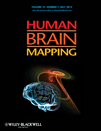
BRAIN AND COGNITION
Scope & Guideline
Advancing Insights in Cognitive Neuroscience
Introduction
Aims and Scopes
- Cognitive Neuroscience:
The journal emphasizes empirical studies that explore the neural mechanisms underlying cognitive functions such as memory, attention, perception, and decision-making, often utilizing advanced neuroimaging and electrophysiological techniques. - Neuropsychology:
Research that examines the impact of brain lesions and neurological disorders on cognitive abilities, providing insights into how specific brain regions contribute to cognitive functions. - Developmental and Aging Studies:
The journal publishes studies investigating cognitive development across the lifespan, including the effects of aging on cognitive processes and the implications of early life experiences on later cognitive abilities. - Interdisciplinary Approaches:
It encourages research that merges cognitive psychology with neuroscience, including studies on the effects of physical activity, music, and environmental factors on cognitive performance. - Clinical Applications:
The journal features research aimed at understanding cognitive impairments in clinical populations and developing interventions, such as transcranial stimulation techniques and cognitive rehabilitation strategies.
Trending and Emerging
- Neuroimaging and Electrophysiology:
There is an increasing emphasis on integrating neuroimaging and electrophysiological methods (e.g., fMRI, EEG) to investigate cognitive processes, revealing intricate neural correlates of cognitive functions. - Impact of Physical Activity on Cognition:
Recent studies are focusing on how different forms of physical activity, including aerobic exercise, influence cognitive performance and underlying neural mechanisms, highlighting the importance of lifestyle factors in cognitive health. - Cognitive Rehabilitation and Intervention Strategies:
Emerging themes regarding the efficacy of cognitive interventions, such as transcranial direct current stimulation (tDCS) and cognitive training programs, are gaining prominence as researchers seek to develop evidence-based therapeutic approaches. - Social and Emotional Cognition:
There is a growing interest in understanding the neural bases of social cognition and emotional processes, particularly in relation to mental health conditions, reflecting an interdisciplinary approach that bridges neuroscience and psychology. - Child and Adolescent Cognitive Development:
Research focusing on cognitive processes in children and adolescents is trending, particularly studies examining the effects of early experiences and environmental factors on cognitive trajectories.
Declining or Waning
- Traditional Neuropsychological Assessments:
Research centered solely on classical neuropsychological tests is becoming less frequent as newer methodologies, such as neuroimaging and electrophysiological measures, gain traction and provide deeper insights into cognitive functions. - Static Models of Cognition:
There is a noticeable shift away from static models of cognitive processes towards dynamic and integrative models that account for the complexity of cognitive functions in real-world contexts. - Simple Behavioral Studies:
Papers focusing solely on basic behavioral experiments without neurobiological correlates are appearing less frequently, reflecting a trend towards studies that incorporate neurophysiological data.
Similar Journals

COGNITIVE AFFECTIVE & BEHAVIORAL NEUROSCIENCE
Unraveling the Mind: Where Cognition Meets Emotion and BehaviorCOGNITIVE AFFECTIVE & BEHAVIORAL NEUROSCIENCE (ISSN: 1530-7026, E-ISSN: 1531-135X) is an esteemed journal published by SPRINGER that aims to advance the understanding of the interplay between cognitive processes, affective states, and behavioral responses in the field of neuroscience. Established in 2001, the journal provides a rigorous platform for disseminating high-quality research, with a significant focus on both Behavioral Neuroscience and Cognitive Neuroscience. Classified in Q1 and Q2 quartiles for 2023, it ranks highly within its categories, holding positions of #37 out of 88 and #46 out of 115 respectively in the Scopus listings. Although not an open-access publication, readers can access a wealth of valuable insights and innovative findings that enrich the scientific community's understanding of brain function and behavior. The journal's emphasis on interdisciplinary research contributes to its esteemed reputation, making it a vital resource for students, researchers, and professionals striving to explore the complex nature of the human mind and behavior.

COGNITIVE NEUROPSYCHOLOGY
Unraveling Cognitive Mysteries Through Rigorous ResearchCOGNITIVE NEUROPSYCHOLOGY, published by ROUTLEDGE JOURNALS, TAYLOR & FRANCIS LTD, is a premier academic journal that has established itself as a vital resource in the fields of cognitive neuroscience, neuropsychology, and psychology since its inception in 1984. With an esteemed impact factor that reflects its significance within the academic community, this journal is classified in the Q1 category for Arts and Humanities (miscellaneous) and Q2 in various other fields, including Cognitive Neuroscience and Developmental Psychology, based on the latest evaluation of 2023. COGNITIVE NEUROPSYCHOLOGY provides a platform for the dissemination of innovative research findings and theoretical advancements that deepen our understanding of cognitive processes and behavior in relation to neural systems. The journal also boasts a robust Scopus ranking, ensuring that articles published are of the highest caliber. Though it follows a traditional publishing model, the journal's commitment to rigorous peer review guarantees that it remains an authoritative voice for researchers, professionals, and students devoted to advancing knowledge in these critical areas of study.

AGING NEUROPSYCHOLOGY AND COGNITION
Innovating research in neuropsychology and gerontology.AGING NEUROPSYCHOLOGY AND COGNITION, published by ROUTLEDGE JOURNALS, TAYLOR & FRANCIS LTD, is a leading scholarly journal that spans the interdisciplinary fields of psychology, neuropsychology, and gerontology. With a strong focus on understanding aging processes and cognitive function, this journal serves as a critical platform for researchers, clinicians, and students dedicated to advancing knowledge in the realm of cognitive aging. The journal, established in 1994, presents high-quality research articles, comprehensive reviews, and innovative studies that contribute to the discourse surrounding mental health and aging. Notably, it has been recognized with a 2023 Q2 ranking in Experimental and Cognitive Psychology and Neuropsychology categories, reflecting its significant impact within these domains. The journal includes open access options, making it widely accessible to a global audience. Researchers interested in the latest findings and theoretical developments in aging neuropsychology will find this journal an invaluable resource, further enhanced by its robust Scopus rankings and commitment to academic excellence through 2024 and beyond.

BRAIN RESEARCH
Innovative research for a deeper understanding of the mind.BRAIN RESEARCH is a premier journal published by Elsevier, specializing in the intricate domains of neuroscience, developmental biology, and molecular biology. Established in 1966, this esteemed publication has become a cornerstone for researchers, professionals, and students dedicated to advancing our understanding of brain function and disorders. With an impressive impact factor and a consistent presence in the Q2 quartiles across key categories—such as Developmental Biology, Neurology, and Neuroscience—it stands out as an essential resource for disseminating innovative research and pioneering insights. The journal's scope encompasses both clinical and fundamental studies, fostering a multidisciplinary approach to the complexities of neural systems. Although it is not an open-access journal, BRAIN RESEARCH provides a vital platform for sharing progressive findings that can inspire future studies and contribute significantly to the evolutionary discourse in neuroscience. Based in the Netherlands, at RADARWEG 29, 1043 NX AMSTERDAM, BRAIN RESEARCH continues to shape the landscape of neuroscience research, inviting submissions that explore the latest discoveries and therapeutic strategies.

Frontiers in Human Neuroscience
Bridging Neuroscience with Behavioral InsightsFrontiers in Human Neuroscience is a premier open access journal published by FRONTIERS MEDIA SA, dedicated to advancing the understanding of the complexities of human neuroscience. With an ISSN of 1662-5161, the journal has established its prominence in various fields, achieving a Q2 ranking in categories such as Behavioral Neuroscience, Neuropsychology and Physiological Psychology, and Psychiatry and Mental Health as of 2023. Since its inception in 2008, Frontiers in Human Neuroscience has consistently contributed to the scholarly dialogue by offering a platform for innovative research that bridges the gap between neuroscience and behavioral science. The journal's rigorous peer-review process and commitment to open access ensures that findings are readily available, promoting collaboration and progress within the academic community. With an impact on neuroscience disciplines, it stands at the forefront of the field, inviting researchers, professionals, and students alike to engage with cutting-edge studies and developments. The journal's address is located in Lausanne, Switzerland, where it continues to flourish as a hub for neurobiological exploration.

Aging Brain
Illuminating the Path to Cognitive LongevityAging Brain is a premier Open Access journal published by Elsevier, dedicated to advancing the understanding of the neurobiological changes associated with aging. Since its commencement in 2021, this journal has been pivotal in disseminating high-quality research that explores the intricate relationships between aging and cognitive functions, neurological disorders, and overall brain health. With a notable commitment to open accessibility, Aging Brain ensures that vital findings are available to a global audience, fostering collaboration and innovation in the field. Researchers, healthcare professionals, and students alike will find a rich repository of cutting-edge studies, reviews, and insights aimed at addressing the complexities of the aging brain. The journal stands as an influential platform for those passionate about enhancing the quality of life for the aging population, making it a valuable resource in gerontology and neuroscience.

HUMAN BRAIN MAPPING
Exploring the intricate pathways of the human brain.HUMAN BRAIN MAPPING, published by Wiley, is a premier journal in the field of neuroscience, devoted to comprehensively advancing understanding of brain structure and function through innovative mapping techniques. With an impressive impact factor and ranked in the Q1 category across multiple relevant disciplines—including Anatomy, Neurology, and Radiology—this journal is recognized as a vital resource for researchers and professionals passionate about the complexities of the human brain. Founded in 1993 and continuously publishing groundbreaking research, HUMAN BRAIN MAPPING is essential for those looking to stay at the forefront of developments in anatomical and neurological research. Though it does not currently offer Open Access options, the journal remains committed to disseminating high-quality research that influences clinical practices and academic inquiry. Its esteemed position within Scopus highlights its significance; charting at the top percentiles across various medical and health fields serves as a testament to the critical contributions made by the authors and researchers involved. As it converges toward 2024, HUMAN BRAIN MAPPING continues to be the go-to platform for publishing pivotal insights into the intricacies of brain mapping methodologies and applications.

Neuropsychologia
Pioneering Research at the Nexus of Psychology and NeuroscienceNeuropsychologia, published by PERGAMON-ELSEVIER SCIENCE LTD, is a premier journal that delves into the intersections of psychology and neuroscience, specifically focusing on behavioral and cognitive processes. Since its inception in 1963, this esteemed journal has been a vital platform for researchers, professionals, and students, showcasing innovative studies and advancements in the fields of Behavioral Neuroscience, Cognitive Neuroscience, and Experimental Psychology. With a commendable impact factor, placing it in the Q2 category across multiple disciplines, Neuropsychologia is recognized for its contribution to the scientific community, ranking among the top journals in both Experimental and Cognitive Psychology and Neuroscience. The journal's commitment to excellence is evident in its rigorous peer-review process and its mission to disseminate cutting-edge research, making it an invaluable resource for those seeking to expand their knowledge and insights in neuropsychology. For further reading, the journal is accessible in both print and digital formats, ensuring that researchers can easily engage with the latest findings and theoretical advancements in this dynamic field.

EXPERIMENTAL BRAIN RESEARCH
Contributing to the Evolution of Neuroscientific KnowledgeEXPERIMENTAL BRAIN RESEARCH is a renowned journal published by SPRINGER, dedicated to advancing understanding in the field of neuroscience. With a history dating back to 1966, this journal offers valuable insights into the mechanisms of brain function and neurological disorders, making it a vital resource for researchers, professionals, and students alike. While it currently holds a Q3 classification in the field of Neuroscience (miscellaneous) and ranks #73 out of 113 in Scopus's General Neuroscience category, it continually contributes to fostering innovative research and collaborative dialogue. The journal is not open access, ensuring that although content is subscription-based, it maintains a high standard of peer review and scholarly rigor. By covering a breadth of topics relevant to both experimental and theoretical aspects of brain research, EXPERIMENTAL BRAIN RESEARCH serves as an essential platform for disseminating cutting-edge discoveries and theories in the dynamic realm of neuroscience.

Brain Connectivity
Exploring the Intricacies of Neural Networks.Brain Connectivity is a premier journal dedicated to advancing the understanding of neural connections and brain function through innovative research and interdisciplinary collaboration. Published by MARY ANN LIEBERT, INC, this journal has established itself in the field of neuroscience, earning a respectable Q2 ranking in the 2023 category of Neuroscience (Miscellaneous) and a Scopus rank of 61 out of 113 in General Neuroscience. Since its inception in 2011, Brain Connectivity has been at the forefront of research on the intricate web of brain networks, exploring topics such as functional connectivity, neuroimaging, and the implications of connectivity studies for understanding various neurological disorders. Researchers, professionals, and students benefit from comprehensive access to cutting-edge studies and critical reviews, fostering a deeper appreciation of brain dynamics. As the field evolves, Brain Connectivity remains a vital resource for those aiming to contribute to our growing understanding of brain architecture and function.